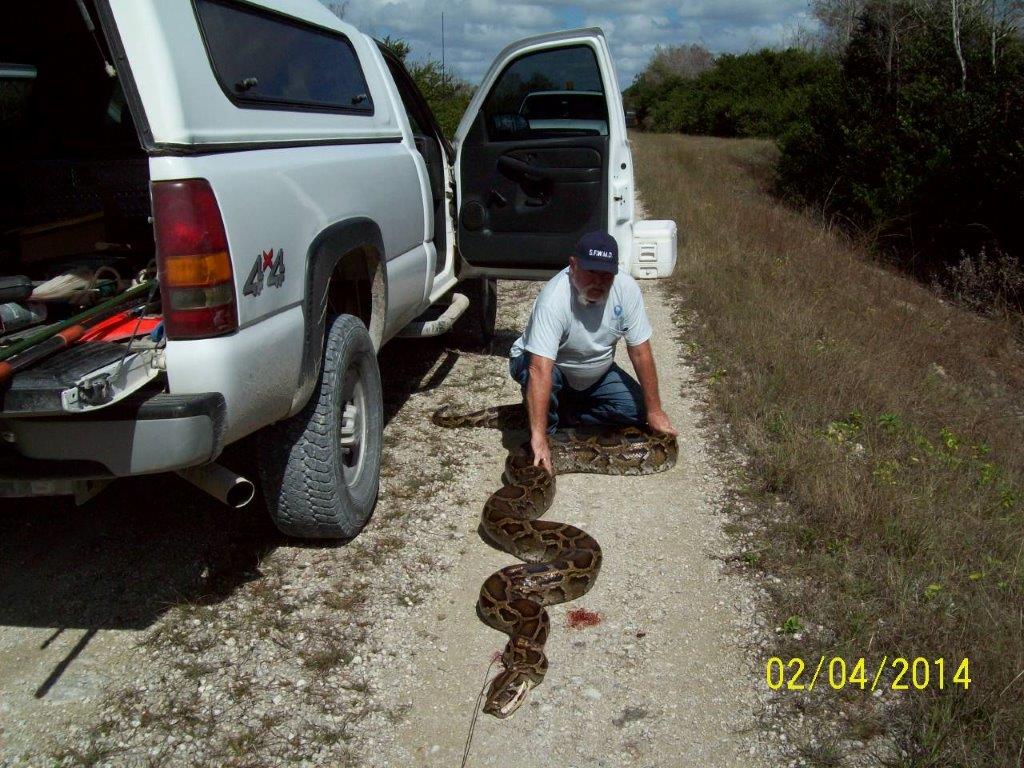18.2 Feet! One of Biggest Burmese Pythons Caught in Florida

Florida officials say they've bagged one of the biggest Burmese pythons ever found in the state: an 18.2-foot-long (5.5 meters) female weighing some 150 pounds (68 kilograms).
The snake, which was shot and killed in the Everglades on Tuesday (Feb. 4), could set a record for the largest Burmese python ever seen on state-owned lands, said Randy Smith, a spokesperson for the South Florida Water Management District.
The animal, however, measures a few inches shorter than the longest-ever Burmese python found in Florida: a snake that stretched 18 feet, 8 inches (5.6 meters) long and was wrangled by a man on the side of the road in a rural part of Miami-Dade County in May 2013.
It's alarming to find Burmese pythons with such robust physique in the wilds of Florida, because the snake is considered an invasive species. Native to Southeast Asia, the nonvenomous constrictors are popular as exotic pets, and pet Burmese pythons that were released or escaped are likely responsible for establishing the breeding population that's taken hold in Florida in the past two decades. With no natural predators in the state, the snakes' numbers have exploded, and they're wiping out native wildlife like bobcats, foxes and raccoons. [See Photos of Giant Burmese Pythons in the Florida Everglades]
"You'd be hard pressed to find a rabbit or squirrel down there in the Everglades now," Smith told Live Science. "These snakes eat alligators — or they try to. They don't have any enemies and they eat anything they can get their teeth on."
The 18-foot snake was discovered on a levee about 25 miles (40 kilometers) west of Miami near the Tamiami Trail as field station workers with the Water Management District were conducting a routine levee inspection, Smith said. There's over 1,000 miles (1,600 km) of levees in the area, he added, providing perfect hiding spots for the pythons as they stalk their prey.
"They're ambush hunters, and they like to hide down at the toe of the levee where there's plenty of bush and foliage," Smith told Live Science.
Get the world’s most fascinating discoveries delivered straight to your inbox.
The snake's body has been turned over to researchers at the University of Florida for a post-mortem exam, Smith said. The necropsy (animal autopsy) could reveal what the snake was eating before it died and whether it was carrying any viable eggs.
When researchers cut open a previous record-setting female Burmese python (which was 17 feet, 7 inches, or 5.3 meters, in length), they found an astonishing 87 eggs inside.
Follow Megan Gannon on Twitter and Google+. Follow us @livescience, Facebook & Google+. Original article on Live Science.



